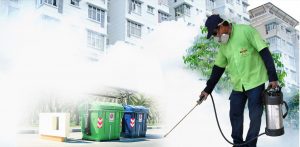Termite Control Services
April 9, 2019Pre Construction Termite Treatment
 Pre Construction Termite Treatment
Pre Construction Termite Treatment
Pest control is the instruction or management of a species defined as a pest, a member of the animal kingdom that crash adversely on human activities. The human reply depends on the importance of the damage done, and will series from tolerance, during deterrence and management, to attempts to completely eradicate the pest. Pest control actions may be performed as part of an integrated pest management strategy.
In agriculture, pests are reserved at bay by cultural, chemical and biological means. Ploughing and agriculture of the soil before sowing reduces the pest burden and there is a modern trend to limit the use of pesticides as far as possible. This can be achieve by monitoring the crop, only applying insecticides when necessary, and by growing varieties and crops which are resistant to pests. wherever possible, biological means are used, encouraging the natural enemies of the pests and introducing suitable predators or parasites.
Inside homes and urban environments, the pests are the rodents, birds, insects and other organisms that share the habitat with humans and that feed on and spoil possessions. Manage of these pests is attempted through exclusion, repulsion, physical removal or chemical means. Otherwise, various methods of biological control can be used including sterilization programmers.
Control methods
Biological pest control
Biological pest control is a technique of controlling pests such as insects and mites by using other organisms. It relies on predation, parasitism, herbivory or other natural mechanisms, but typically also involves an active human management role. Traditional biological control involves the introduction of natural enemies of the pest that are bred in the laboratory and released into the environment. An alternative approach is to augment the natural enemies that occur in a particular area by releasing more, either in small, frequent batches or in a single large-scale release. Preferably, the released organism will breed and survive, and provide long-term control. Biological control can be an important component of an integrated pest management programme.
Cultural control
Mechanical pest control is the utilize of hands-on techniques as well as simple equipment and devices that provide a protective barrier between plants and insects. This is referred to as tillage and is one of the oldest methods of weed control as well as being of use for pest control; wireworms, the larvae of the general click beetle, are very destructive pests of newly plowed grassland, and repeated cultivation exposes them to the birds and other predators that feed on them.
Trap cropping
A trap crop is a crop of a stand that attracts pests, diverting them from nearby crops. Pests aggregated on the trap crop can be more easily controlled using pesticides or further methods. Though trap-cropping, on its own, has often failed to cost-effectively reduce pest densities on large commercial scales, without the use of pesticides, possibly due to the pests’ ability to disperse back into the main field.
